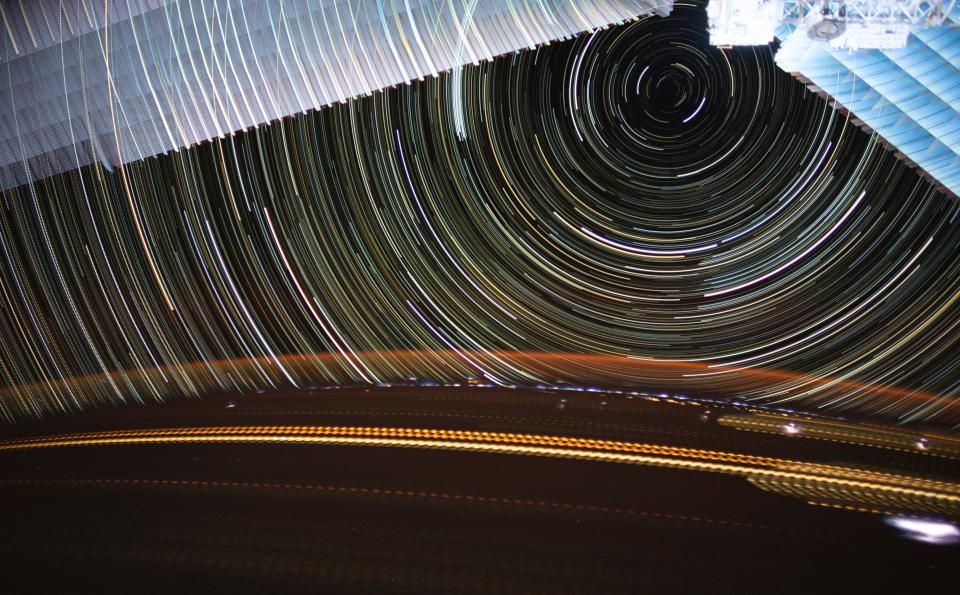Space pictures! See our image of the day
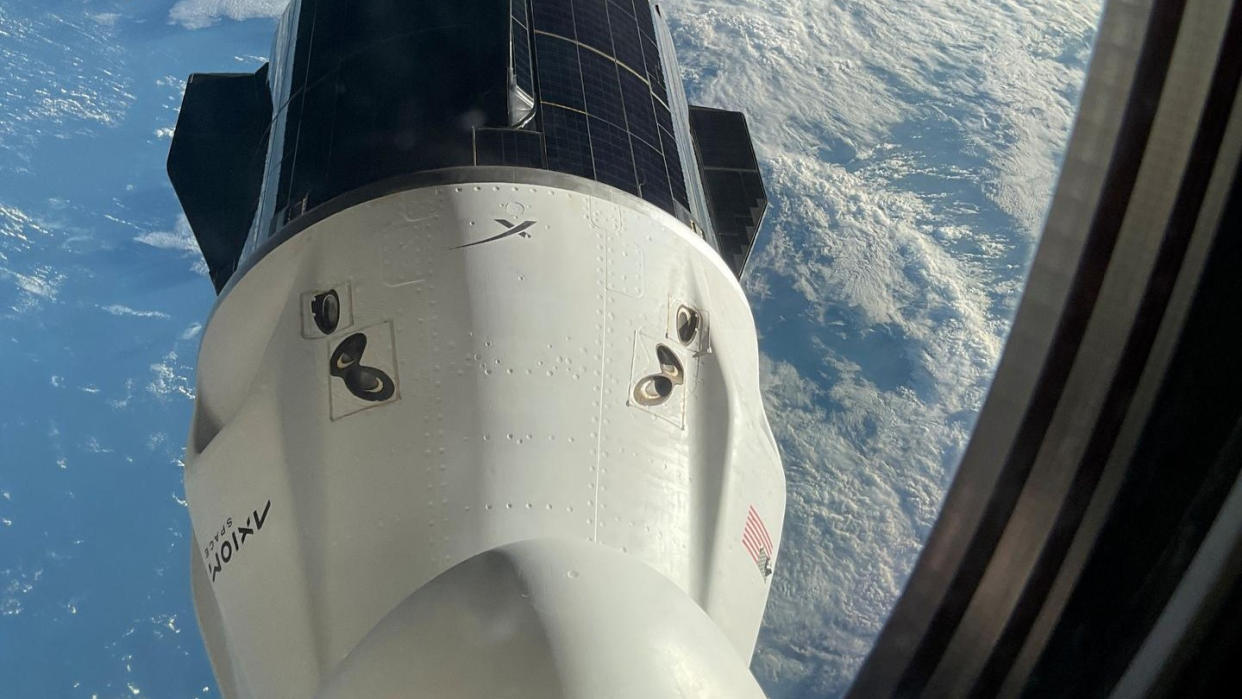
Space can be a wondrous place, and we've got the pictures to prove it! Take a look at our favorite space pictures here, and if you're wondering what happened to today in space history don't miss our On This Day in Space video show here!
A Dragon's Perspective
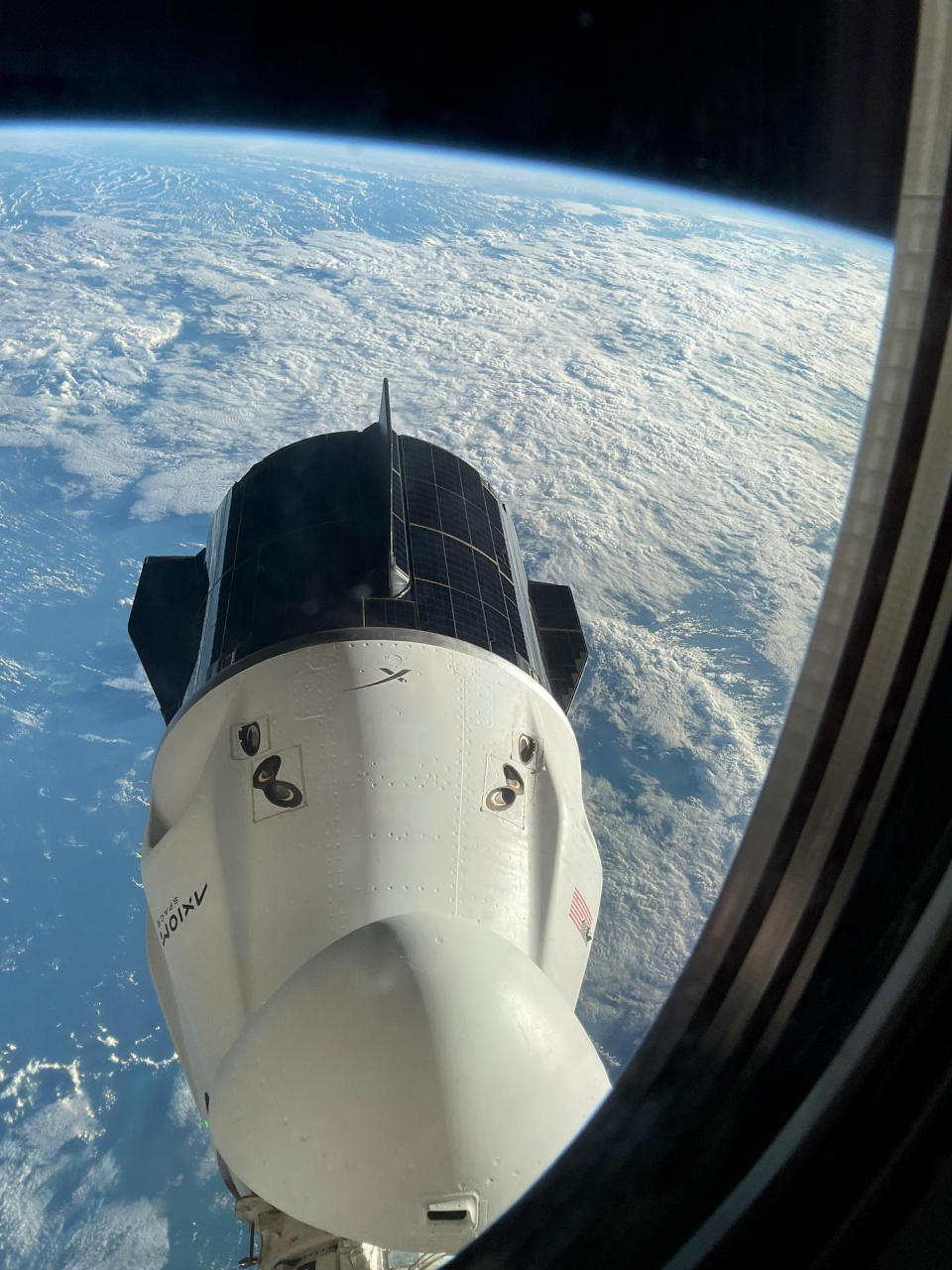
Friday, February 9, 2024: Through the window of SpaceX's Crew Dragon Endurance, the Crew Dragon Freedom is seen docked to the International Space Station (ISS). At the time this was published, Freedom is currently on its way back to Earth, carrying the Axiom-3 crew members from a two-week stay aboard the ISS, completing Axiom Space's third privately crewed mission.
Endurance launched to the ISS in August, last year, with an internationally diverse group of astronauts on the SpaceX Crew-7 mission for NASA. Crew-7 will board Endurance for their own ride back to Earth about a week after Crew-8 arrives at the space station, which is currently slated for later this month.
KSC Sunset
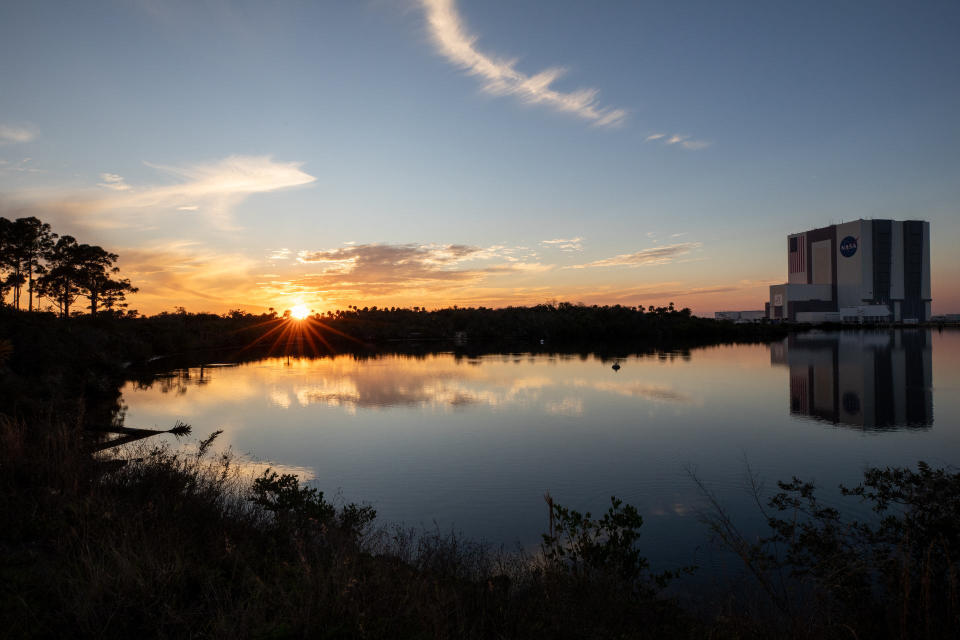
Thursday, February 8, 2024: The Vehicle Assembly Building (VAB) is reflected in the waters in this photo taken at NASA's Kennedy Space Center (KSC), in Florida. KSC resides on Merritt Island National Wildlife Refuge, which is home to over 350 types of birds, dozens of other wildlife, and more than a thousand varieties of flora on the grounds.
The space center exists harmoniously on the refuge's 140,000 acres, where tourists can visit the KSC Visitor Complex and Saturn IV Center, while NASA, the U.S. Space Force, SpaceX and other companies conduct regular launches from the cape.
The VAB stands 525 feet (160 meters) in height, and is the tallest single-story building in the world. It has been home to NASA's Saturn V rocket during the Apollo program's missions to the moon, the space shuttles and, most recently, the Space Launch System (SLS) rocket launch NASA's next astronauts to the moon as part of the space agency's Artemis program.
Splash down, thumbs up
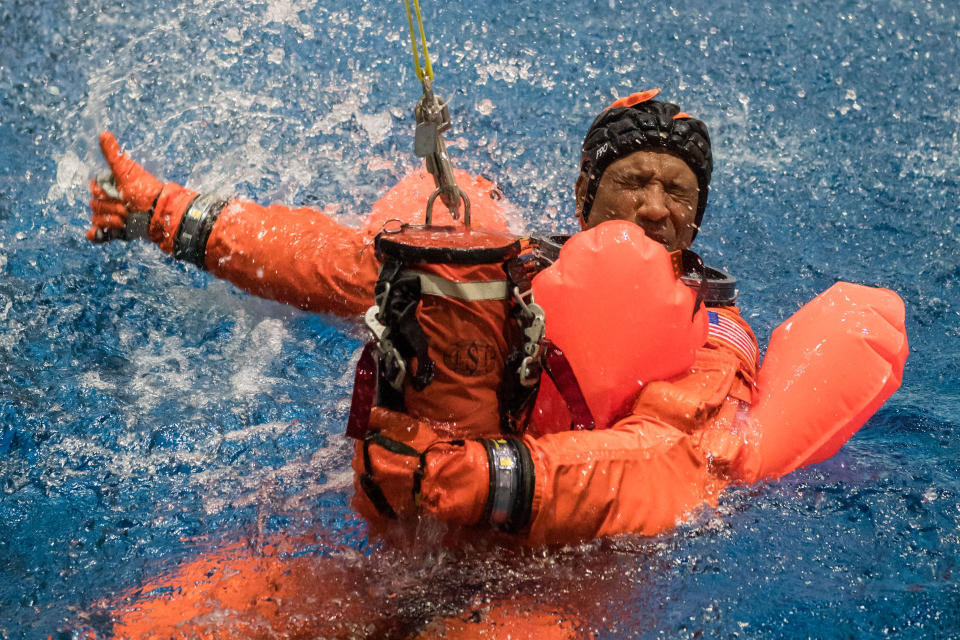
Wednesday, February 7, 2024: NASA astronaut Victor Glover gives a thumbs up from the pool in the Neutral Buoyancy Lab at NASA’s Johnson Space Center in Houston. Glover will serve as pilot on NASA's Artemis 2 mission, which will launch four astronauts around the moon in September 2025.
Launching on a Space Launch System (SLS) rocket from NASA's historic Launch Complex 39-B, at the Kennedy Space Center, in Florida, the Orion capsule carrying the Artemis 2 crew will fly a loop around the moon before returning to Earth for a splashdown in the Pacific Ocean. Glover is pictured here practicing some of the recovery procedures involved with Orion's return, wearing the same IVA (intravehicular activity) suit that Artemis 2 crew will wear during their mission.
Humans for scale
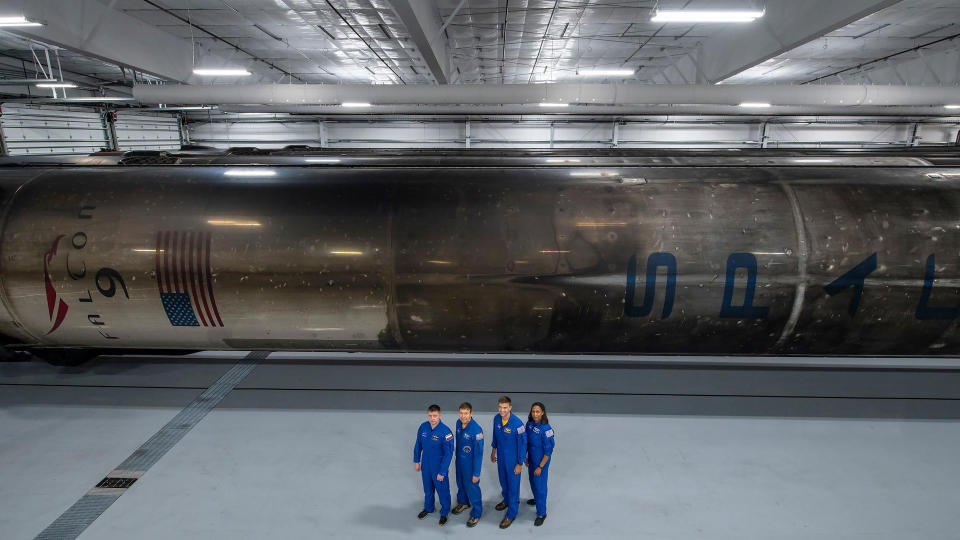
Tuesday, February 6, 2024: The four tiny humans in this photo are the members of SpaceX's Crew-8 mission to the International Space Station, standing before the booster that will launch them there. The Falcon 9 rocket will carry Roscosmos cosmonaut Alexander Grebenkin, and NASA astronauts Michael Barratt, Matthew Dominick and Jeanette Epps aboard a SpaceX Crew Dragon later this month.
Galactic tug of war

Monday, February 5, 2024: NASA's Hubble Space Telescope has zoomed in on one side of a cosmic tug-of-war that will rage between two galaxies for tens of millions of years. Frustratingly, this is one competition in which a clear winner may never emerge, as the two galaxies could well be drawn together to merge into one at the end of this gravitational contest.
The galaxy imaged by Hubble is the spiral galaxy NGC 5427. Along with its opponent, the similarly sized spiral galaxy NGC 5426, the galaxy makes up the pairing Arp 271, located around 130 million light-years from Earth in the constellation of Virgo.
Read the full story, by Robert Lea.
A centuries-old solar eclipse painting
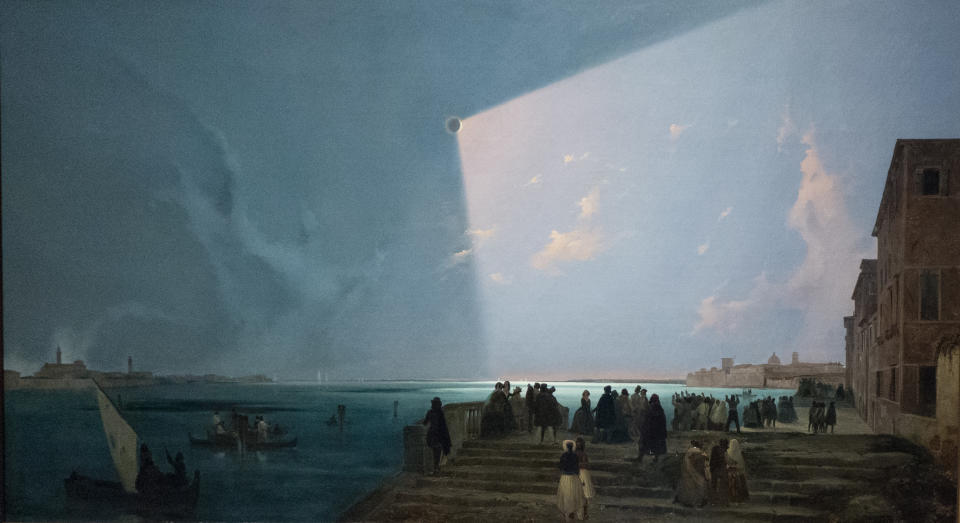
Friday, February 2, 2024: Though this painting may not be a classic Hubble Space Telescope image or International Space Station view that we typically attach to the term "space photo," it is a cosmic portrait nonetheless.
It feels striking that artist Ippolito Caffi depicted a solar eclipse through his artwork in the 1800's, attempting to capture the eeriness of our moon crossing between us and the sun. But, moreover, it's touching to see that a major aspect of this image involves onlookers at the bottom, most of whom are admiring the scene. It's a beautiful painting and a beautiful sentiment. We've always loved to watch solar eclipses.
Earth's golden glow
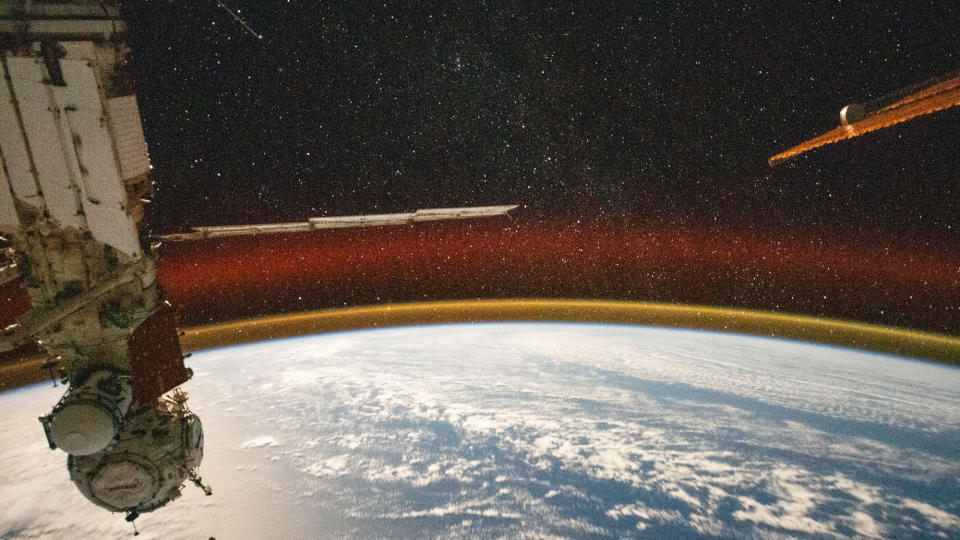
Thursday, February 1, 2024: A golden glow illuminates Earth's horizon in a stunning new image from the International Space Station.
The atmospheric glow, or airglow, captured in the new photo occurs when sunlight interacts with atoms and molecules within Earth's atmosphere. The new photo, which NASA shared on Jan. 21, shows a bright golden glow arching above Earth, along with an auburn-colored band against the dark contrast of a starry sky backdrop.
The photo was taken at an altitude of 258 miles (415 kilometers) as the orbiting lab flew over the Pacific Ocean northeast of Papua New Guinea, according to a NASA image description. — Samantha Mathewson
Oh no! A black hole spaghettified some of Space.com's Images of the Day, and there aren't any pictures from January!
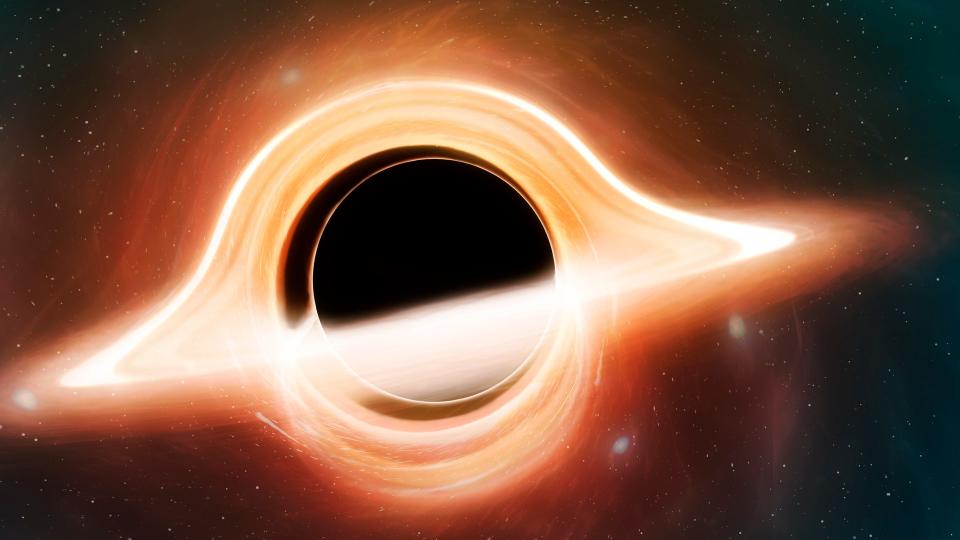
Archives >
Check out our Image of the Day Archives for more awesome photos.
Image of the Day 2020 Archive
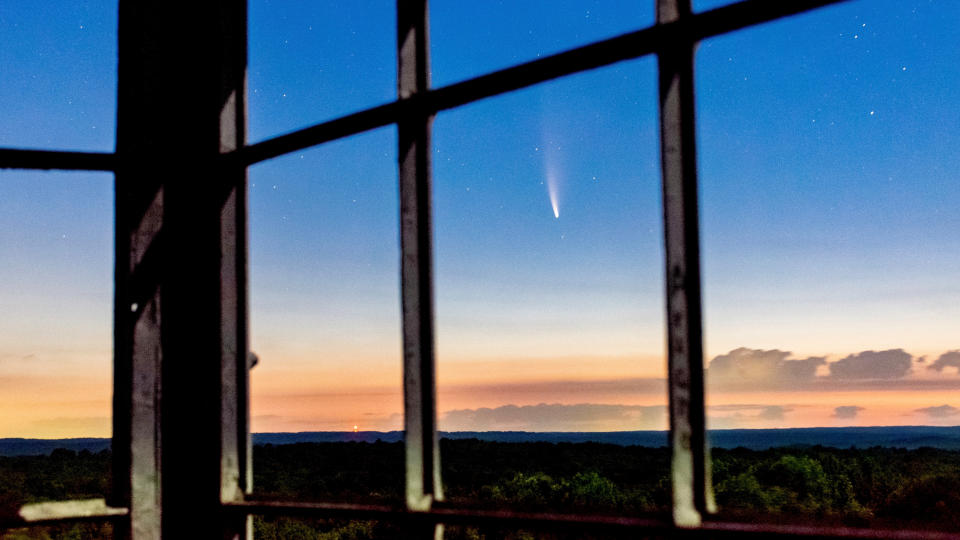
Image of the Day 2019 Archive
